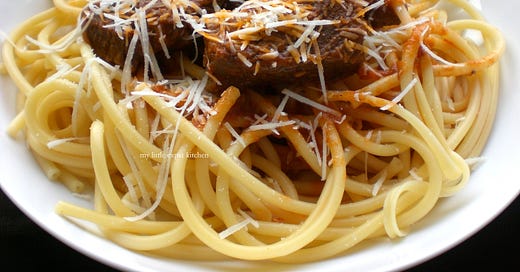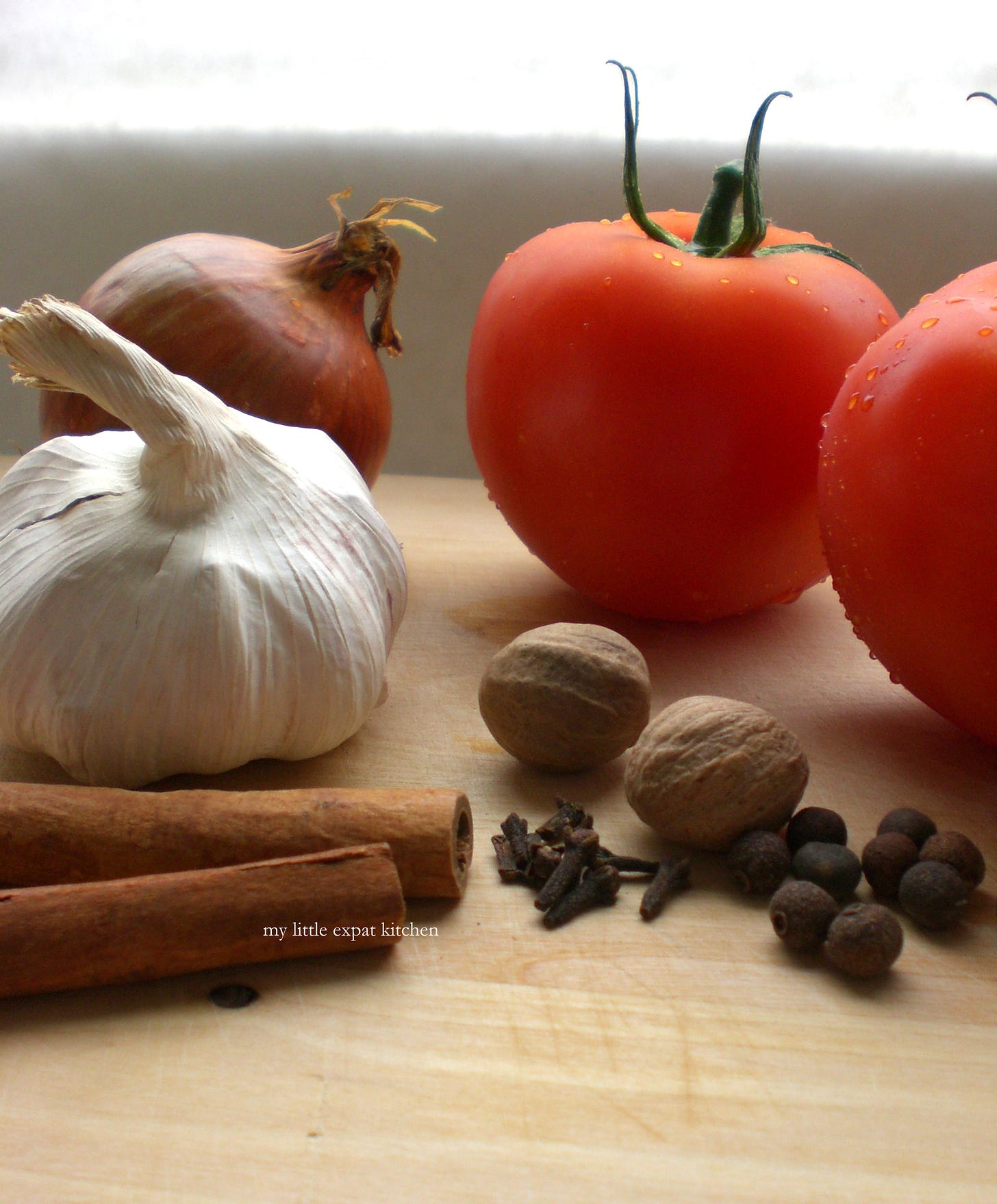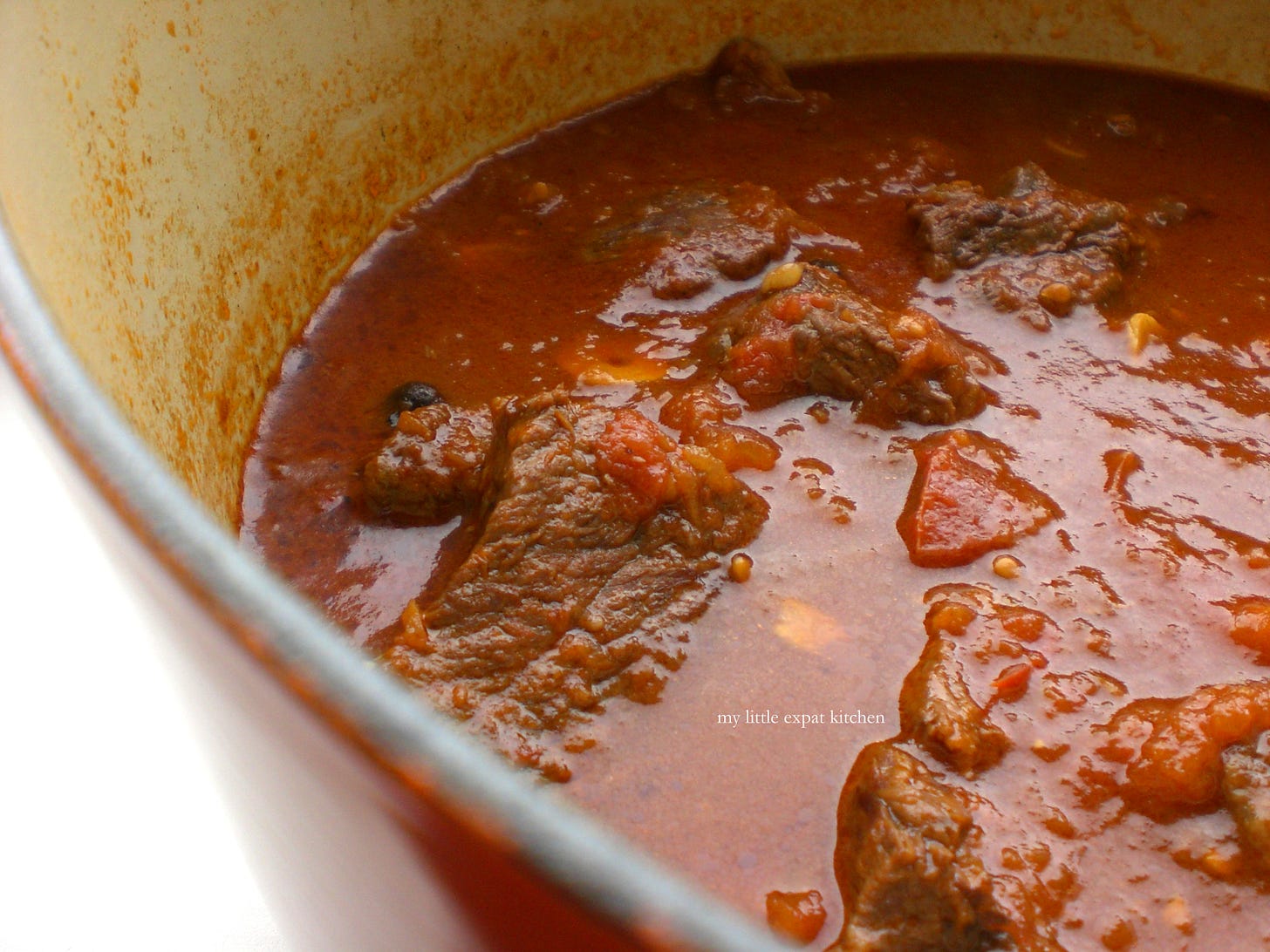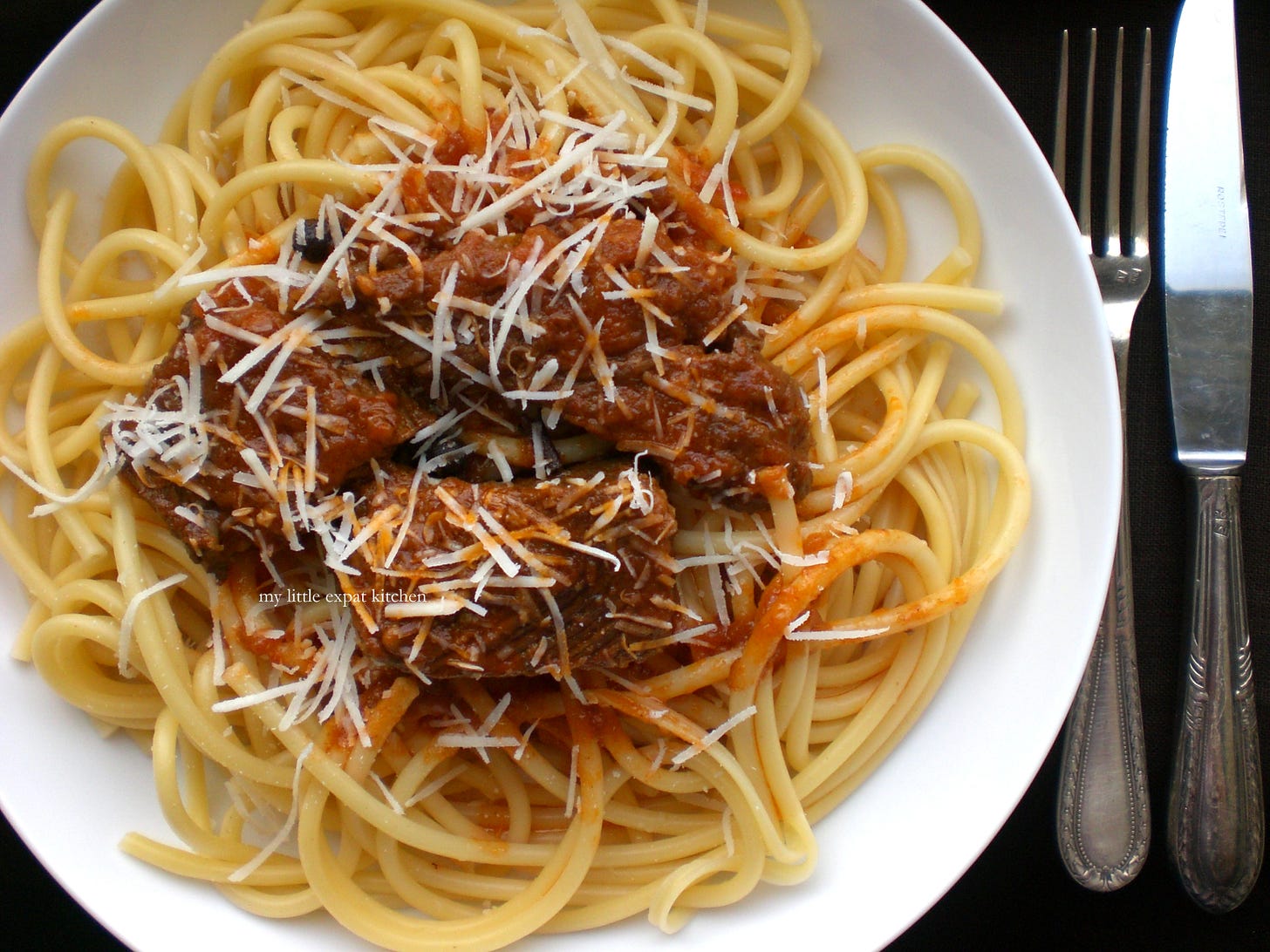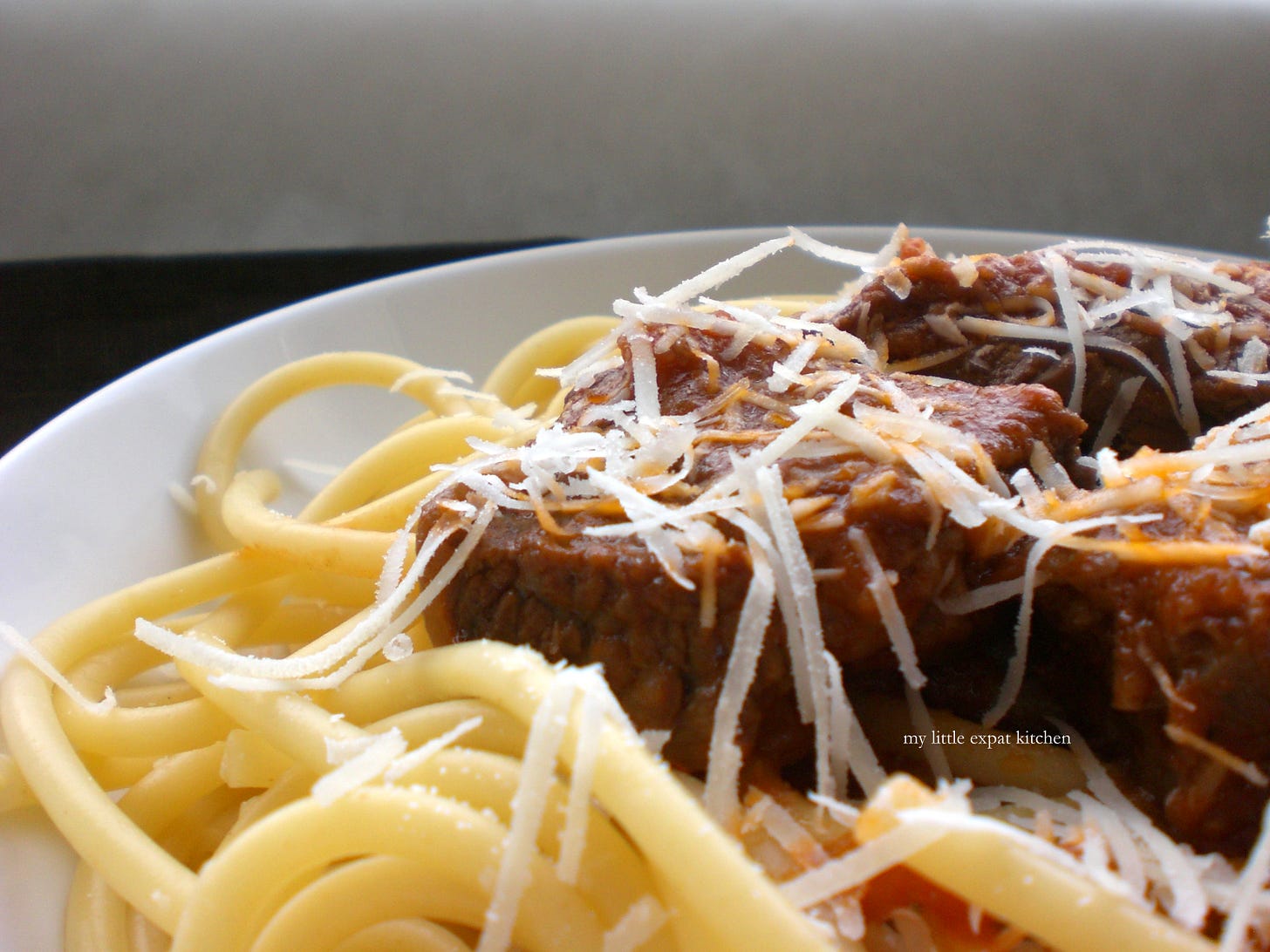Kefalonitiki Pastitsada - Greek Beef Stew from Kefalonia with tomatoes and spices on top of tubular pasta
Κεφαλονίτικη Παστιτσάδα
Published originally on my blog on 21 November 2010
When people think of Greek food, their minds immediately go to souvlaki, gyros, tzatziki and spanakopita. I've had about a dozen people asking me for a spanakopita recipe the moment I set foot in Holland and since then I've been handing out recipes for my souvlaki left and right. Well, this is partly my own fault. The first dinner party I ever threw in Holland, included souvlaki and two trays of tyropita (Greek cheese pie) so I had it coming.
But seriously, I know that Greek food is known and loved the world over but it is not limited to those dishes. One of the reasons I started this blog was exactly that. To show people how diverse and rich Greek food is and how geography and the influence of neighboring countries have shaped traditional Greek food culture.
Greece is a country with great geographical diversity. Its enormous Mediterranean coastline and vast seas provide ample space for fishermen to catch unique fish and shellfish that have been part of the Greek diet since ancient times. Dishes of the Greek islands like garides saganaki (sautéed prawns in tomato and feta sauce) and grilled fish with ladolemono (olive oil and lemon dressing) are examples of the simplicity that characterizes Greek island food.
Parts of mainland Greece are rocky and mountainous areas where meat is consumed in great amounts, with goat, lamb and veal being the meats of choice. Hearty goat stews, thick-crusted minced veal pies and whole roasted baby lamb, are being prepared in every household all year round—even during the summer months when in other parts of Greece lighter dishes are preferred—and this uncomplicated yet sophisticated style of cooking has been passed on from one generation to the next.
Vegetables, fruit and legumes were always a big part of Greek cuisine but during the Byzantine period, spices and sugar were introduced and with them new techniques and ways of cooking. Politiki cuisine, the type of Greek cooking I grew up with, is a direct descendant of the Byzantine gastronomy.
Greek cuisine has also been influenced by other cultures. In its long history, Greece has been occupied by the Romans and the Venetians, the Ottomans and the Catalans and they all affected the culinary history of Greece, introducing novel ingredients and combinations of flavors.
The Ionian Islands, situated off the west coast of Greece, and particularly Kefalonia, have been greatly affected by the Venetian occupation and their culinary history has been shaped by this north Italian influence. The Venetians were the ones who brought the tomato to the island of Kefalonia and because they consumed large quantities of olive oil, they were responsible for the planting of a great number of olive trees on the island. Olive trees were already grown there since ancient times but the Venetians rewarded with money the islanders who planted more of them all around Kefalonia. Today, quality olive oil is still an important product of the region.
"Kefalonitiki Pastitsada" or, if this is all sounding Greek to you (you know I had to say it at some point), beef (or veal) stew with tomatoes and spices on top of thick, tubular pasta from the island of Kefalonia, is a dish that can be found in most of the Ionian Islands. Each island has its own version, with the one from Kerkyra (Corfu) being the most widely known but to me, the one from Kefalonia is the best.
The last time I was in Kefalonia, in the summer of 2009, I must have eaten at least five different versions of this dish, either in restaurants and tavernas or at friends' homes. That and Kreatopita, a meat pie, were the dishes I craved the most when I returned from Kefalonia. I had to savor them again and the only way to do that was by recreating them myself and coming up with a recipe. So I did.
Pastitsada is an earthy and highly aromatic beef stew with a thick tomato sauce that is packed with flavor, which is imparted by the fresh tomatoes, the garlic and olive oil, the red wine and the addition of a number of spices. It's an unpretentious dish that comforts and soothes the senses. Served always with thick, long tubular pasta like bucatini and a generous sprinkling of Greek mizithra or kefalotyri cheese, it is gratifying, robust and synonymous with pure and authentic Greek flavor.
Kefalonitiki Pastitsada - Greek Beef Stew from Kefalonia with Tomatoes and Spices on top of Tubular Pasta
Greeks always choose veal over beef, we don’t particularly enjoy the mature flavor of beef, but you can use either.


